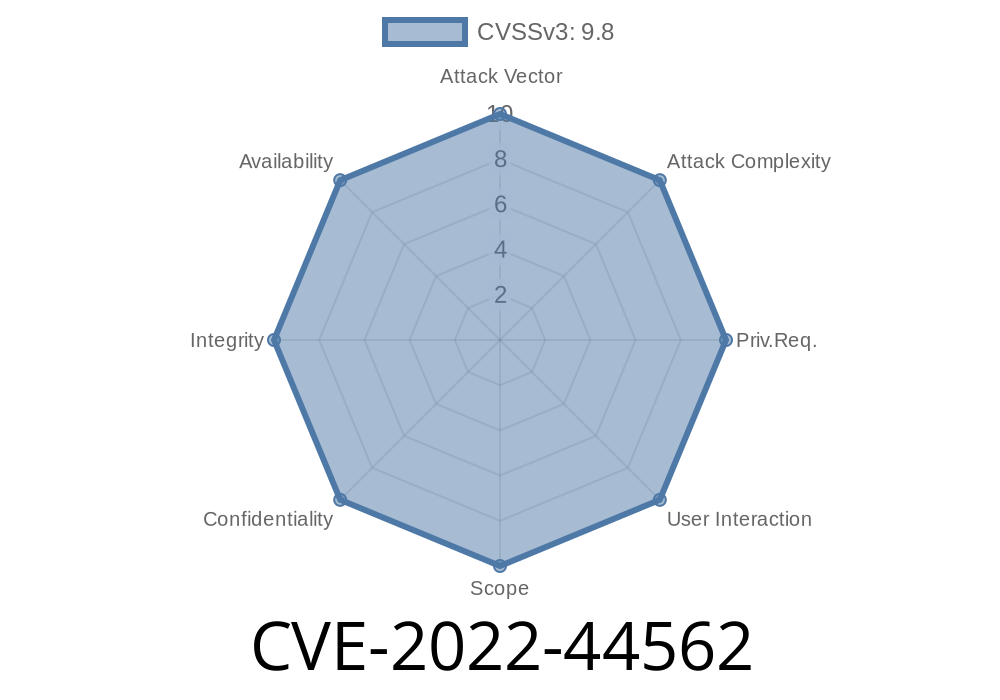The Common Vulnerabilities and Exposures (CVE) system assigns unique identifiers to publicly disclosed security vulnerabilities. One such vulnerability, identified as CVE-2022-44562, has recently been discovered within the system framework layer of certain software applications. This particular vulnerability is related to a mismatch in serialization and deserialization processes, which if successfully exploited, may result in privilege escalation for a malicious attacker.
Serialization and Deserialization Mismatch
Serialization is the process of converting an object's state into a format that can be easily stored or transmitted. Deserialization, on the other hand, is the opposite process, where the object's state is reconstructed from the serialized format. A mismatch between these two processes can lead to inconsistencies and security risks.
In the case of CVE-2022-44562, the vulnerability arises from an improper implementation of serialization and deserialization, leading to potential exploitation by an attacker who can submit crafted data, resulting in a potential privilege escalation.
Consider the following simplified code snippet, which demonstrates the vulnerability
import pickle
class Exploit(object):
def __reduce__(self):
return (os.system, ('echo vulnerable',))
def serialize(obj):
return pickle.dumps(obj)
def deserialize(data):
return pickle.loads(data)
if __name__ == "__main__":
serialized_data = serialize(Exploit())
deserialize(serialized_data)
In this example, an object of the Exploit class is serialized using Python's built-in pickle module. During the deserialization process, the __reduce__ method within the Exploit class is executed, running the os.system function with the argument 'echo vulnerable'. If an attacker successfully inserts their own crafted data, they can potentially gain higher privileges by running arbitrary code or commands.
Original References and Exploit Details
The vulnerability associated with CVE-2022-44562 was initially disclosed in the following reputable security resources:
1. National Vulnerability Database (NVD)
2. MITRE CVE Dictionary
These sources provide a detailed technical explanation of the vulnerability, its impact, and potential methods to mitigate or remediate the associated risks. For a complete analysis and understanding of CVE-2022-44562, it is recommended to review these sources and remain updated on any newly discovered information.
Avoiding the usage of insecure serialization libraries or techniques.
2. Implementing validation checks during the deserialization process to ensure only trusted data is processed.
3. Ensuring proper access controls and least privilege principles are followed to minimize the potential impact of a successful exploit.
In addition, staying informed about security updates and patches related to the affected software components can greatly aid in reducing the risks associated with CVE-2022-44562.
Conclusion
Understanding and addressing security vulnerabilities like CVE-2022-44562 is crucial to ensuring the safety and integrity of software ecosystems. Developers must remain vigilant and adopt secure coding practices to prevent potential exploits, while users must stay informed about the latest updates and patches to safeguard their systems from unauthorized access and privileges.
Timeline
Published on: 11/09/2022 21:15:00 UTC
Last modified on: 11/10/2022 19:09:00 UTC
